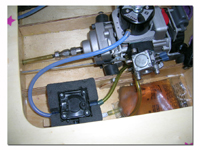
Learn how to install a water pump in your boat...
If you want to run a clutch in your boat, a water pump is a must. It might seem
complicated, but it really isn't. Here we will show you how to install and
plumb your new water pump.
The pump used in this article is sold by Warehouse Hobbies . Also
shown is the water pump mount from the same company. The mount is quite simply
a foam block precisely cut for the pump to fit into. Mount the block and drop
in the pump! The water pump is a Walbro brand pump. It is what is called a
"diaphragm pump" and it operates off of pulses from the engine's
crankcase. As the engine performs a full rotation the pressure in the crankcase
is positive as the piston is on the down stroke and then becomes negative as
the piston move up on its upstroke. This variation in crankcase pressure (from positive
to vacuum) is the motor force for our water pump. It is also the motor force
for the engine's carburetor.
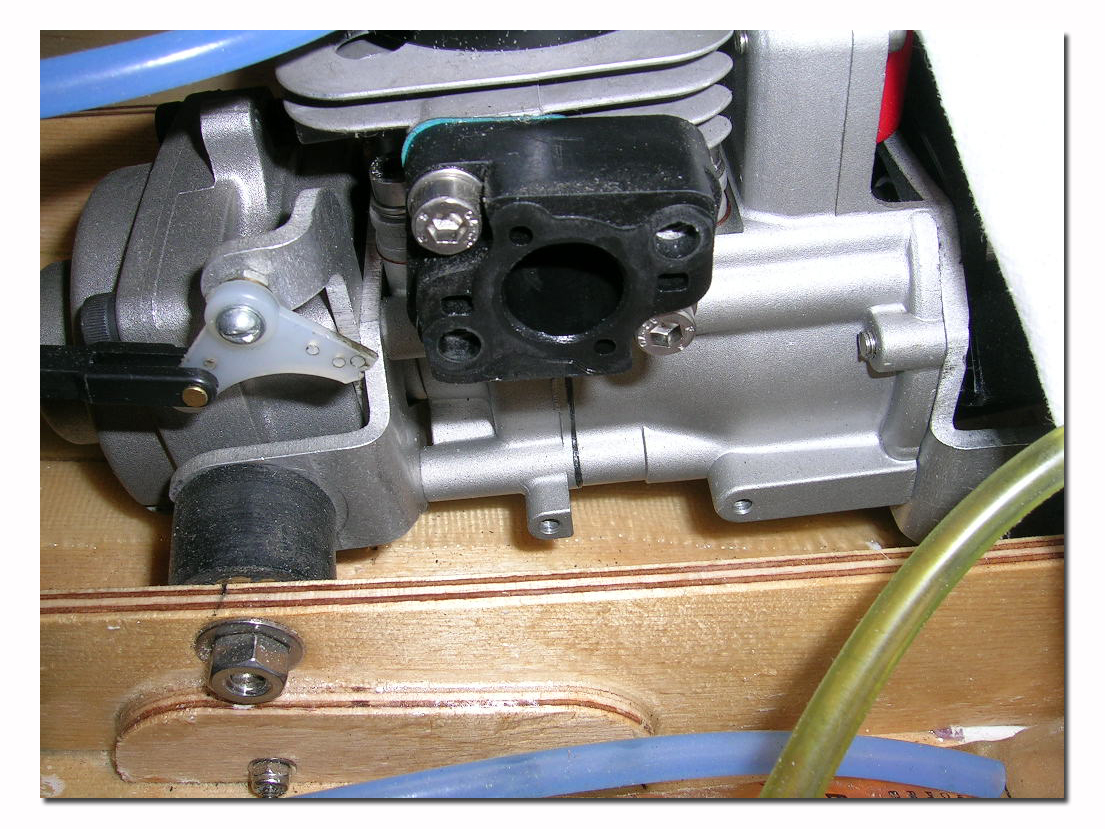
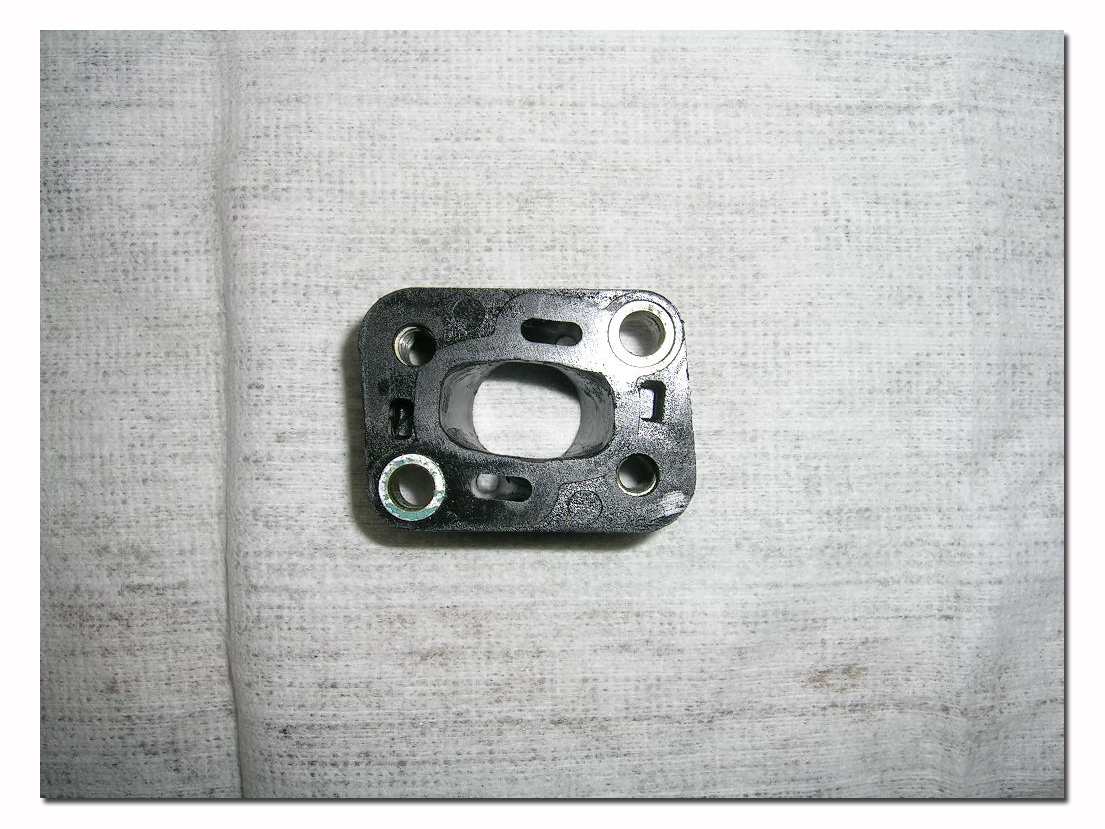 The first thing you have to do for your water pump installation
is to get to the carburetor isolator block. To do this you have to first remove
the carburetor and next the isolator block itself. We remove the block because
we will get our pressure pulse from it. In the isolator block are two small
passages that allow for the crankcase pulse signal to reach the carburetor.
Only one of these passages is actually used though. The factory blocks have two
passages (one on the top and bottom side of the block) so that the block can be
installed either way. The one on the bottom is the one that lines up with the
small hole in the engine just below the intake port. This hole communicates
directly with the engine crankcase and supplies the pulse signal to operate our
carburetor. We will tap into this to use this same pulse for our water pump.
The first thing you have to do for your water pump installation
is to get to the carburetor isolator block. To do this you have to first remove
the carburetor and next the isolator block itself. We remove the block because
we will get our pressure pulse from it. In the isolator block are two small
passages that allow for the crankcase pulse signal to reach the carburetor.
Only one of these passages is actually used though. The factory blocks have two
passages (one on the top and bottom side of the block) so that the block can be
installed either way. The one on the bottom is the one that lines up with the
small hole in the engine just below the intake port. This hole communicates
directly with the engine crankcase and supplies the pulse signal to operate our
carburetor. We will tap into this to use this same pulse for our water pump.
With the block removed, carefully drill a hole in the bottom of the block so
that it will break into the small pulse passage. The typical water fittings are
threaded 10-32 so you will want to drill the hole with a #21 drill bit or if
you don't have one a 5/32" bit should do the trick. After the hole has
been drilled, use a 10-32 tap to thread the hole for the water fitting. With
the tapping done, make sure the passage in the isolator block is clean and
there are no filings blocking it. You can now install the water fitting and
double check that the passages are clear.
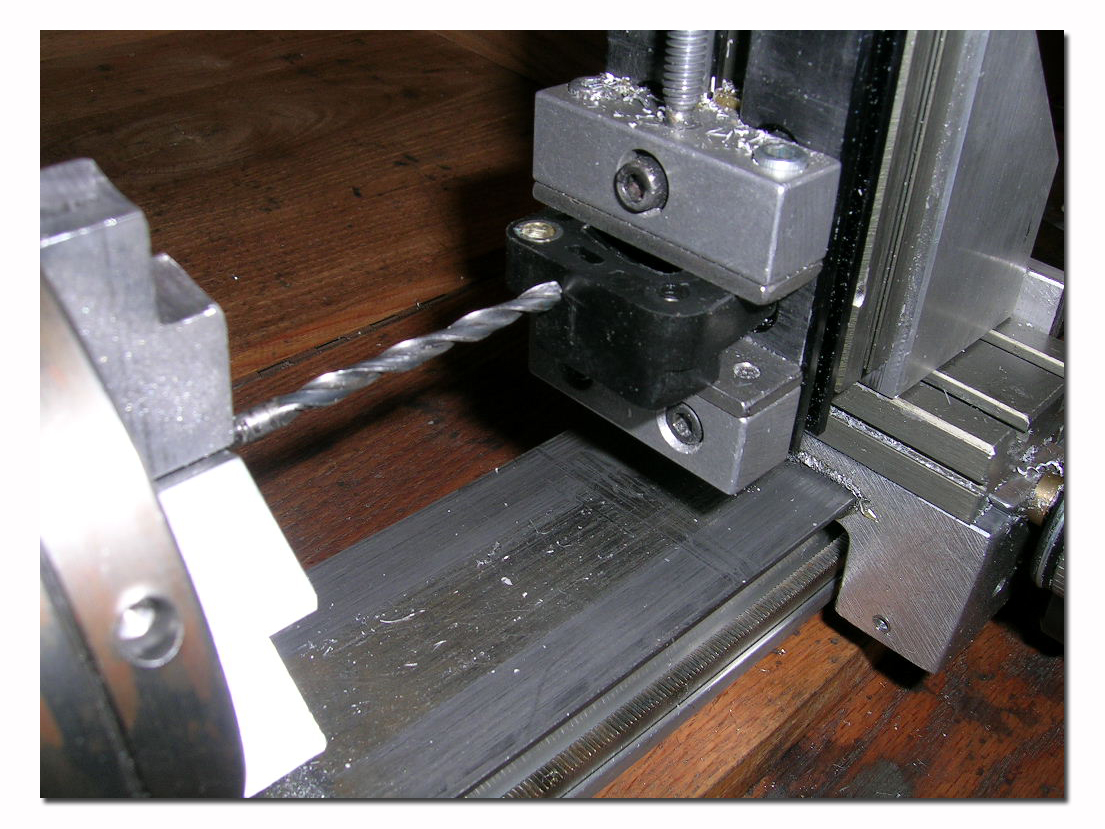
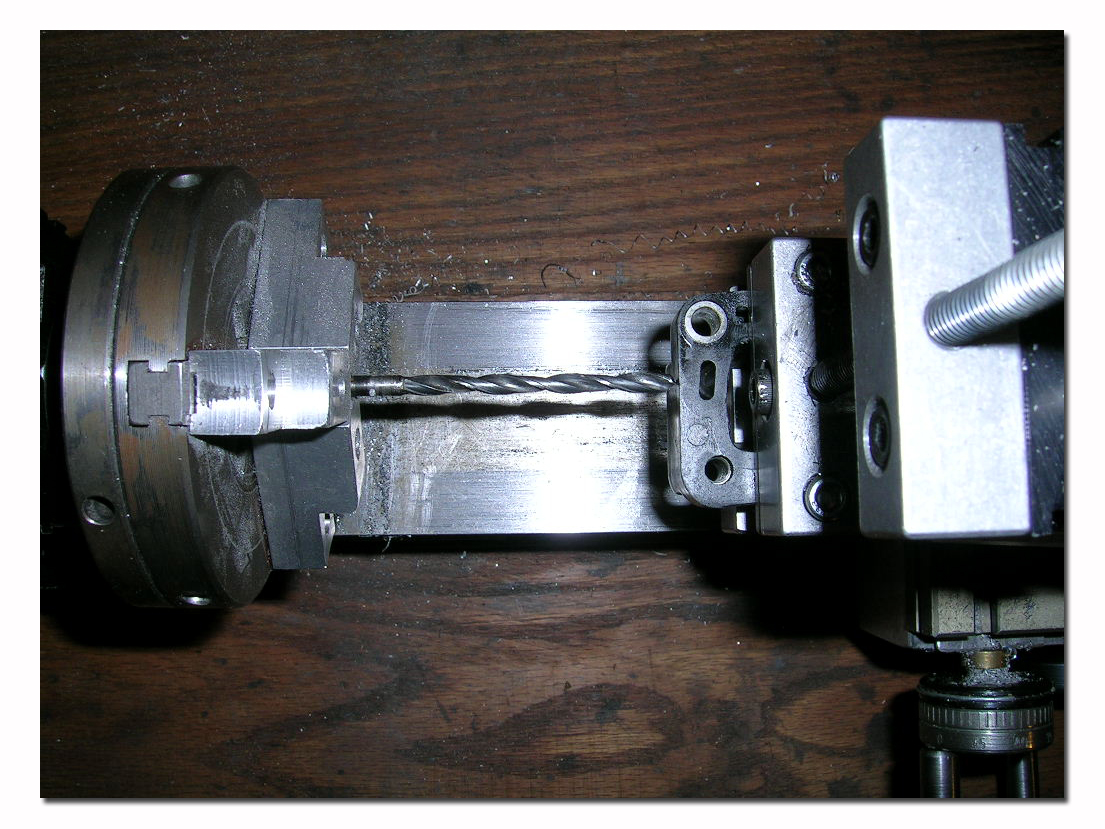
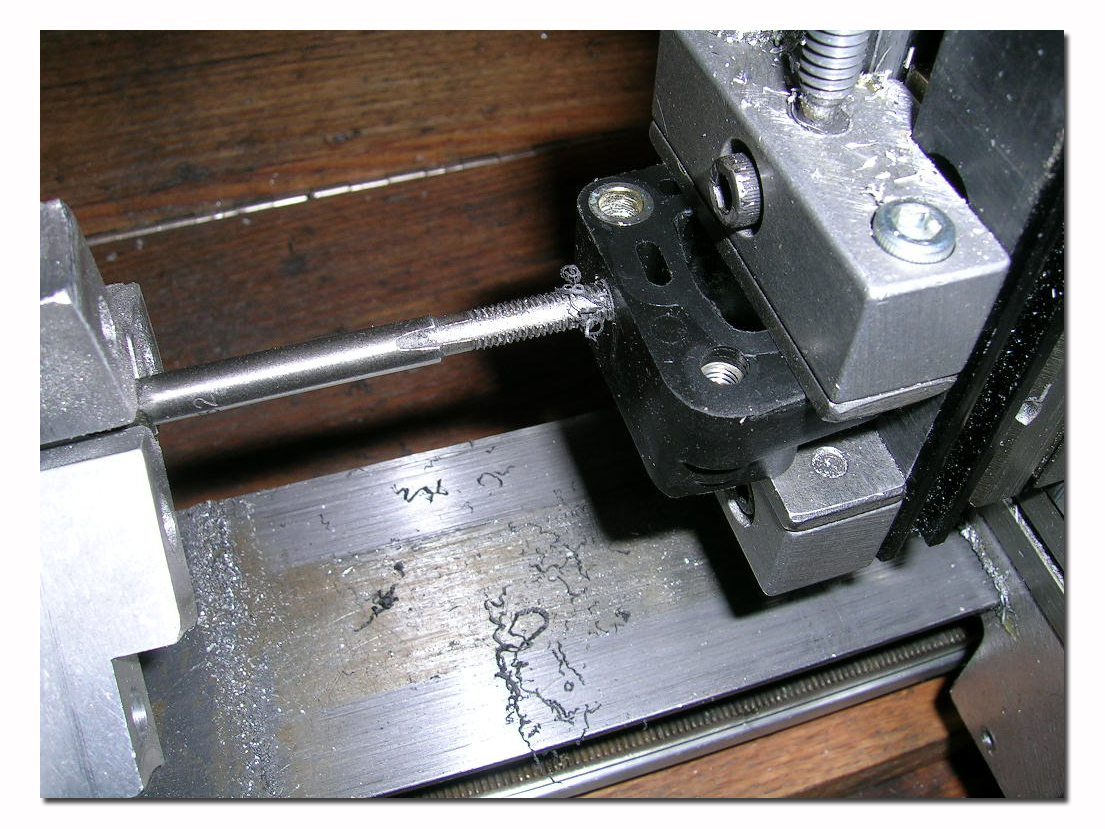
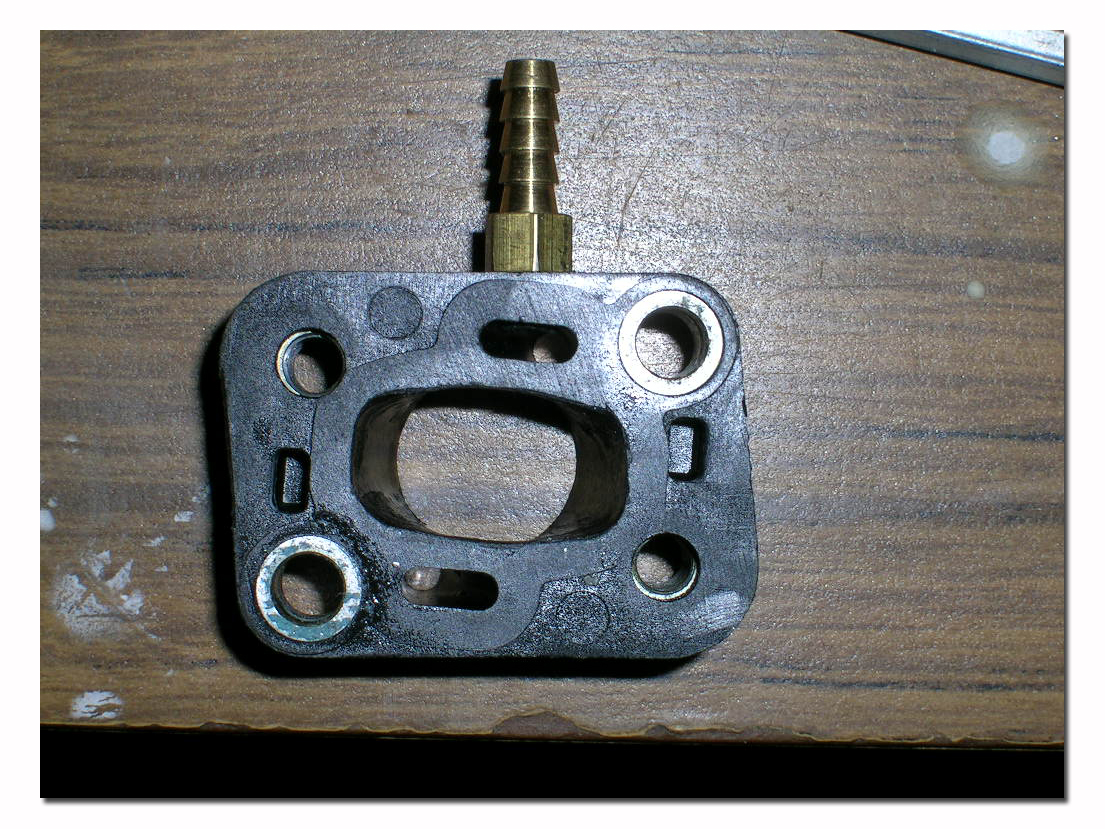
Now find a place to mount your water pump. Ideally mount it as close as
possible to the pulse source (isolator block) to 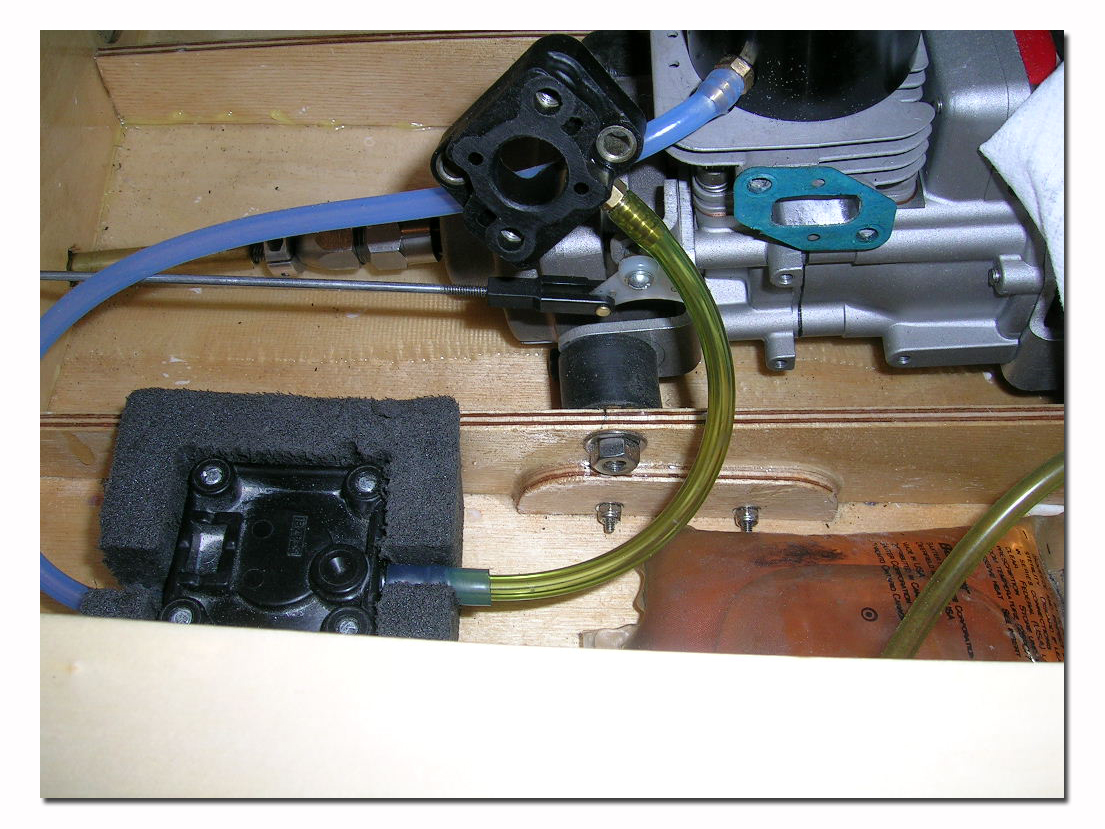 keep the pulse line
as short as possible. The pulse line should be tubing designed for vacuum or at
least tubing that has fairly rigid walls so that it will not absorb the pulse
signal. Keeping the pulse signal as strong as possible is also the reason why
you want to keep the pulse line as short as possible. If you don't have vacuum
tubing handy, you can do like I did and use a piece of used gas tubing. The
tubing has a tendency to harden after being used with gasoline for some time
and works great as pulse line tubing.
keep the pulse line
as short as possible. The pulse line should be tubing designed for vacuum or at
least tubing that has fairly rigid walls so that it will not absorb the pulse
signal. Keeping the pulse signal as strong as possible is also the reason why
you want to keep the pulse line as short as possible. If you don't have vacuum
tubing handy, you can do like I did and use a piece of used gas tubing. The
tubing has a tendency to harden after being used with gasoline for some time
and works great as pulse line tubing.
Run a water line from your water pickup (this should be a pickup that is
constantly in the water such as a rudder blade pickup or transom mounted
pickup, NOT a prop blast pickup) to the pumps inlet and another line from the
pump's outlet to your boat's engine. From the engine the water might exit the
boat or go to a tuned pipe system, depending on components used.
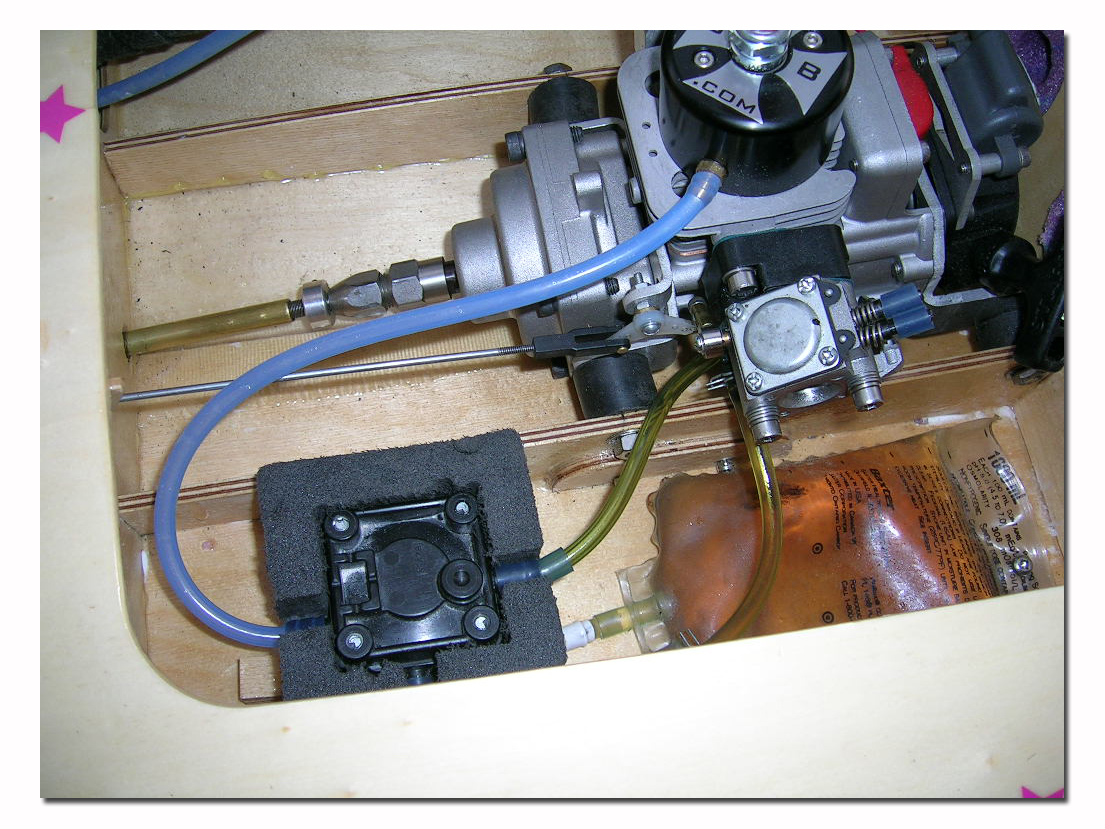
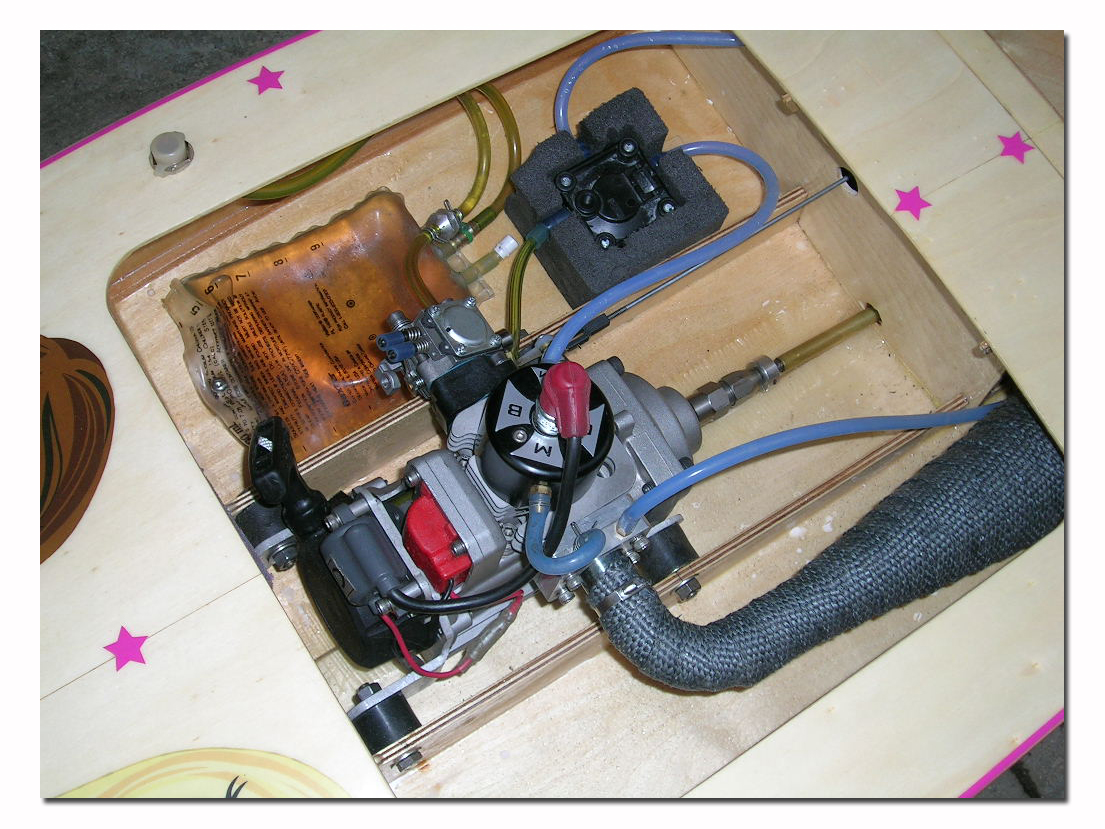
The final step is to test the water pump. To do this, remove the tubing from
your water pickup and drop it in a small container filled with water so that
the pump will draw its water from the container. Start your boat's motor and
within a few seconds the pump should be working and water should be coming out
of the boats water exit fitting. If water is not circulating, make sure all
tubing is correctly connected and that there are no holes or leaks. You can
disconnect the tubing from the pumps outlet and blow through it to make sure
nothing is blocked in the water lines of the boat. Make sure you do not have
inlet and outlet reversed at the pump. They are marked with arrows pointing in
and out of the pump. Both inlet and outlet are part of the same casting of the
pump. The pulse line nipple is on the opposite casting of the pump body. Whatever
you do, do not overheat your engine. Stop it and let it cool. Find the problem
and try again. A good working pump will supply more than enough water to cool
your engine and tuned pipe system if you have one.
Some common causes of pump malfunction:
- inlet / outlet reversed
- leak at pulse line
- blockage at pulse line/fitting
- excessively long pulse line
- pulse line too soft
- restrictive water cooling circuit (blockage at fittings or in tubing)
- water pickup not continuously submerged
- defective pump (valves or diaphragm failure)
Happy Boating!

